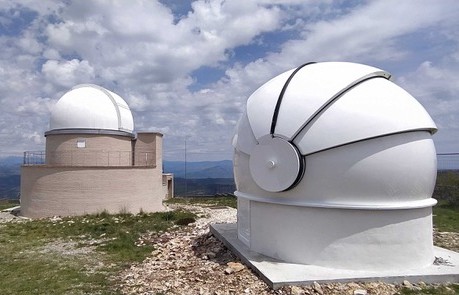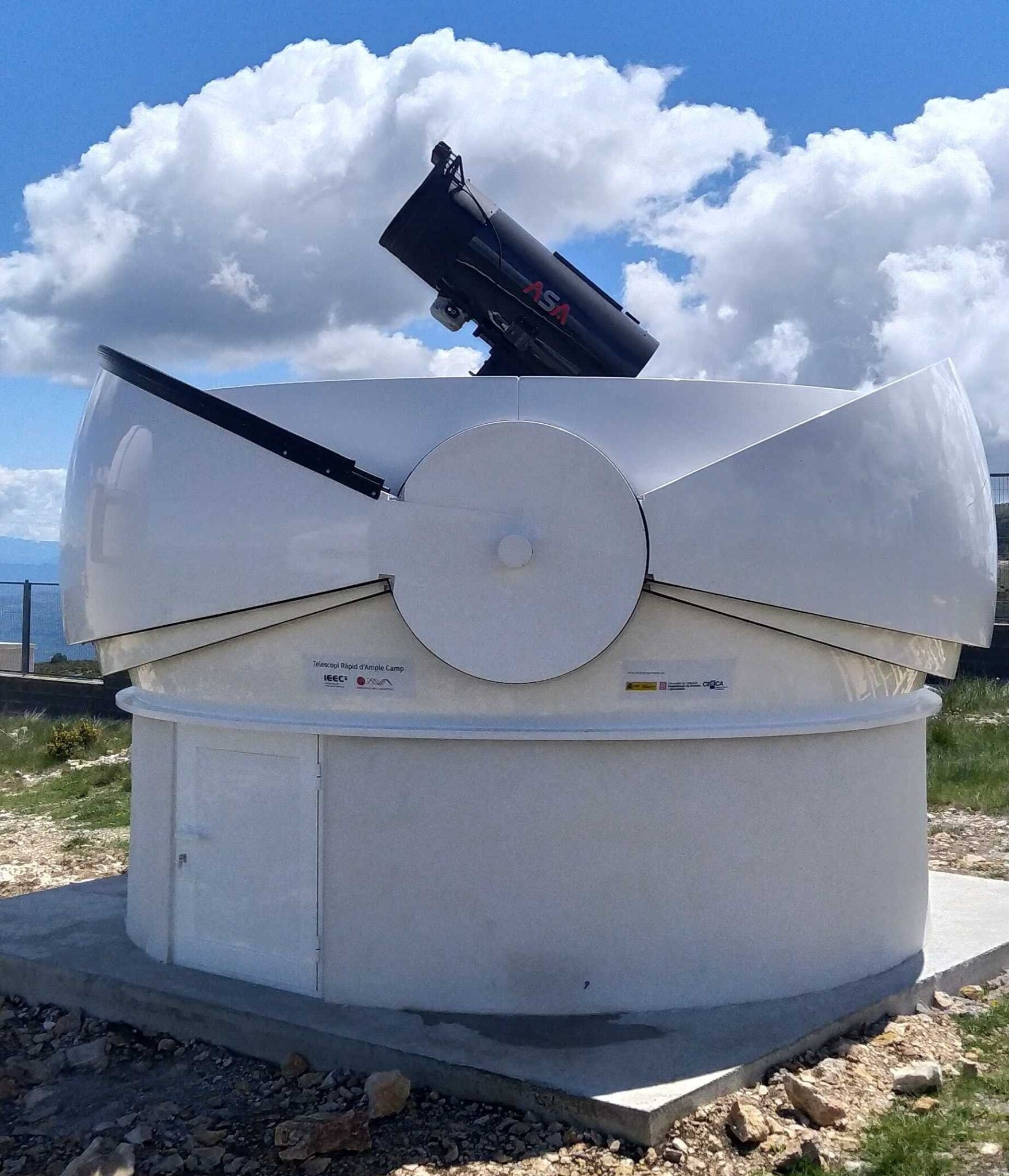The Montsec Observatory expands its capabilities with the installation of a new telescope
• The Wide Field Fast Telescope (TRAC, by its Catalan acronym) will be dedicated to astrophysical research and the development of innovative space-related technologies, complementing the Joan Oró Telescope and the Fabra-ROA Montsec Telescope
• The project is coordinated by the Institute of Space Studies of Catalonia and involves the participation of the Institute for High Energy Physics (IFAE) and the i2CAT research centre
• The funding has been provided within the framework of the CERCAGINYS III call by the Ministry of Science, Innovation and Universities, the Department of Research and Universities of the Government of Catalonia, and the CERCA Institution

Since this May, the Montsec Observatory (OdM) has been equipped with a new instrument: the Wide Field Fast Telescope (TRAC). This new telescope, funded under the CERCAGINYS III call for the development of scientific infrastructures, will bring new capabilities such as the observation of potentially hazardous near-Earth asteroids and the tracking of satellites and space debris.
The OdM, managed by the Institute of Space Studies of Catalonia (IEEC), is a cutting-edge scientific and technological facility for astronomical research, satellite communications, and atmospheric measurements, located in Sant Esteve de la Sarga (Pallars Jussà, Lleida). The new TRAC telescope, with a 40 cm diameter and a wide field of view, will complement its current telescope array, which until now has consisted of the Joan Oró Telescope —the largest in Catalonia, operated by the IEEC— and the Fabra-ROA Montsec Telescope —which belongs to the Royal Academy of Sciences and Arts of Barcelona (RACAB) and the Spanish Navy Observatory (ROA).
A Facility for Cooperative Use
As part of the CERCAGINYS III call awarded in 2024, the IEEC secured funding from the Ministry of Science, Innovation and Universities, the Department of Research and Universities of the Government of Catalonia, and the CERCA Institution to undertake the construction of the new wide-field telescope, TRAC, at the Montsec Observatory (OdM). The project is coordinated by the IEEC itself and involves the participation of the Institute for High Energy Physics (IFAE) and the i2CAT research centre.
The TRAC will be a scientific facility developed and used cooperatively, and it will begin to be offered to the scientific community starting in 2026, once the testing phase and the development of the control system and auxiliary equipment are completed.
The IEEC owns the telescope and will coordinate its management and operation, with participation from IFAE and i2CAT through collaboration agreements.
IFAE’s participation will be carried out through the Scientific Computing Port (PIC), a scientific and technological centre operated in collaboration with the Centro de Investigaciones Energéticas, Medioambientales y Tecnológicas (CIEMAT, and will focus on providing the necessary data storage and accessibility services with sufficient capacity to handle the large volume of data expected to be produced by TRAC.
Meanwhile, i2CAT will focus on researching and developing an appropriate optical communications system that can be added to the telescope in the future.

What will be the functions of the TRAC telescope?
The TRAC will have the capability to carry out:
- Observations of near-Earth and potentially hazardous asteroids: searching for and tracking near-Earth objects (NEOs) and inner solar system asteroids; monitoring lunar flashes caused by asteroid impacts; and observing stellar occultations by asteroids.
- Low surface brightness astronomy: deep and wide-field observations of regions around galaxies to conduct studies on galaxy statistics and evolution.
- Space Surveillance and Tracking (SST) observations of satellites and space debris: tracking low Earth orbit (LEO) objects in coordination with the TJO and the TFRM.
- Optical communications with satellite networks: development of high-capacity data transfer systems using optical communications, as a technology demonstration experiment..
The TRAC will enhance the capabilities of the Montsec Observatory (OdM) and help further establish the Sant Esteve de la Sarga area as a key location with great potential for astronomical observation and the development of space technologies. It will bring new complementary and high-impact interests from both the national and international space industry as well as scientific and technological organizations.
Key Technical Features
- Optical tube: ASA H400 f/2.4, reflector type, 40 cm diameter.
- Mount: ASA DDM100, an equatorial mount with high load capacity and fast pointing and tracking capabilities.
- Camera: QHY 411M Pro, CMOS type, high resolution and sensitivity.
- Dome: AstroHaven clamshell type (full opening).
- Control system: developed by the IEEC and based on the robotic control system of the Joan Oró Telescope (TJO).
Contacts
IEEC Communication Office
Castelldefels, Barcelona
E-mail: comunicacio@ieec.cat
About the IEEC
The Institute of Space Studies of Catalonia (IEEC — Institut d’Estudis Espacials de Catalunya) promotes and coordinates space research and technology development in Catalonia for the benefit of society. IEEC fosters collaborations both locally and worldwide and is an efficient agent of knowledge, innovation and technology transfer. As a result of more than 25 years of high-quality research, done in collaboration with major international organisations, IEEC ranks among the best international research centres, focusing on areas such as: astrophysics, cosmology, planetary science, and Earth Observation. IEEC’s engineering division develops instrumentation for ground- and space-based projects, and has extensive experience in working with private or public organisations from the aerospace and other innovation sectors.
The IEEC is a non-profit public sector foundation that was established in February 1996. It has a Board of Trustees composed of the Generalitat de Catalunya, Universitat de Barcelona (UB), Universitat Autònoma de Barcelona (UAB), Universitat Politècnica de Catalunya · BarcelonaTech (UPC), and the Spanish Research Council (CSIC). The IEEC is also a CERCA centre.
